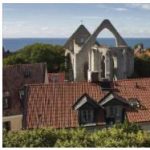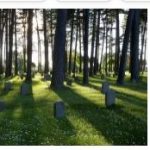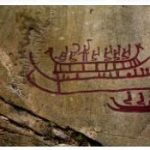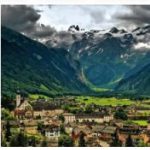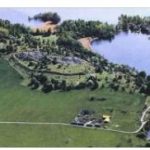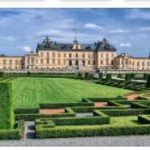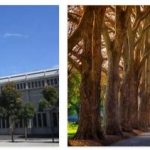Gammelstad is the old center of the northern Swedish city of Luleå and the best preserved church village in Sweden. According to aristmarketing, over 400 wooden huts are grouped around the church, which was founded in the 13th century. They provided welcome overnight accommodation for the remotely resident parishioners when they came to Luleå for worship.
Gammelstad in Luleå: facts
| Official title: | Gammelstad church district in Luleå |
| Cultural monument: | 425 wooden houses and stable buildings around a stone church from the 15th century, which were originally inhabited by churchgoers from the surrounding area for Sunday services and on major public holidays |
| Continent: | Europe |
| Country: | Sweden, Norrbotten |
| Location: | Luleå, on the Gulf of Bothnia and in the Lule Valley, south of the Arctic Circle |
| Appointment: | 1996 |
| Meaning: | the best preserved church town in northern Scandinavia |
| Naming: | Gammelstad = “old town” |
Gammelstad in Luleå: history
| 1327 | first written mention of Luleå |
| 1492 | Consecration of the late Gothic stone church |
| 1520 | Purchase of the Antwerp altar with the passion of Jesus |
| 1621 | City rights for Luleå |
| 1754 | Parish hall with two holding cells |
| 1817 | there were 350 stables, today only five |
Church rooms for scattered souls
During the Middle Ages, the catchment area of the “church village” Luleå extended over a significantly larger area than, for example, today’s state of Baden-Württemberg. At the beginning of the 15th century, when the construction of the church began, there were only about 3,000 souls in this vast community. The homeland of these parishioners stretched from the mountainous border area with Norway, where there is an arctic climate, through seemingly endless swamp and forest areas down to the rural cultural landscape on the coast of the Gulf of Bothnia with a relatively mild climate. The Saami, Finns and Swedes who lived there pursued reindeer herding, struggled with agriculture and fishing, or were busy trading. For all of them, the church holidays were “rungs in the wheel of the year and the wheel of life”. In the sparsely populated area near the coast, a culture with a special character, which has survived to this day, developed. The development of the old town of this “church village” may be simple, but life and living, as well as the shared use of the church cottages by several parishioners, was determined by strict social rules.
At the beginning of the 14th century, the place, which three centuries later was even given city rights, experienced a centrally controlled Swedish colonization with the rest of Norrbotten, which went hand in hand with Christian proselytizing. The choice of location for the church and its construction was a matter for the empire, which was promoted by the ambitious and powerful Archbishop Jakob Ulfsson Örnfot.
With the Reformation in the 16th century, attending church services became an absolute must. The way to church was very difficult for the mostly scattered parishioners. Those who lived too far from the church village were given a few mandatory visits. But precisely because of this, going to church became a special event. The churchgoers came the day before the service to chop wood for heating their church rooms and to make them a little more comfortable. When Johannes Bureus, Sweden’s first imperial monument curator, visited the church village on Christmas 1600, he met bearded peasants in coarse loden vests, saber-legged saami wrapped in furs and strikingly colorfully dressed traveling merchants, the so-called “birch peas”. who strutted through the village in renaissance clothing with wide silver belts and puff sleeves. At the bell tower, standing separately, he saw reindeer with large horns standing side by side with gray, shaggy peasant horses. Compared to these descriptions by the first Reich monument curator, ecclesiastical and social life has hardly changed to this day.
Baptism, Lord’s Supper, engagement, wedding and at the end of life the funeral took place in Gammelstad. The year of the people was determined not only by the seasons, but also by the religious holidays. In the times of Johannes Bureus people came together on Epiphany, Pentecost, Midsummer Eve and Christmas; but the anniversary of Peter’s death, June 29th, was considered an important highlight of the church year. Separate church services were held for the young and older members of the congregation on the respective festive days. The tradition still lives on today that the confirmation test takes place on such days.
The Kirchstubendorf, the largest in Northern Europe, consists of 425 small wooden houses with more than 550 small rooms that surround the church. After horses and reindeer were ousted by cars, only a few of the once quite numerous stables have survived. The houses stand close together and line streets and alleys that lead to the church in the style of the Middle Ages. According to an old Swedish idiom, the church should be in the middle of the village, and that’s exactly right for old Luleå.
The 15th-century stone-built church is the largest medieval church north of Uppsala, the seat of the archbishop. It is richly decorated with a valuable altar shrine from Antwerp. This was paid for in cash by the community, although it was three times more expensive than a conventional altar of the time. With its scenes from the life of Jesus it is so magnificent that one would rather expect it in a cathedral than in a rural church.



